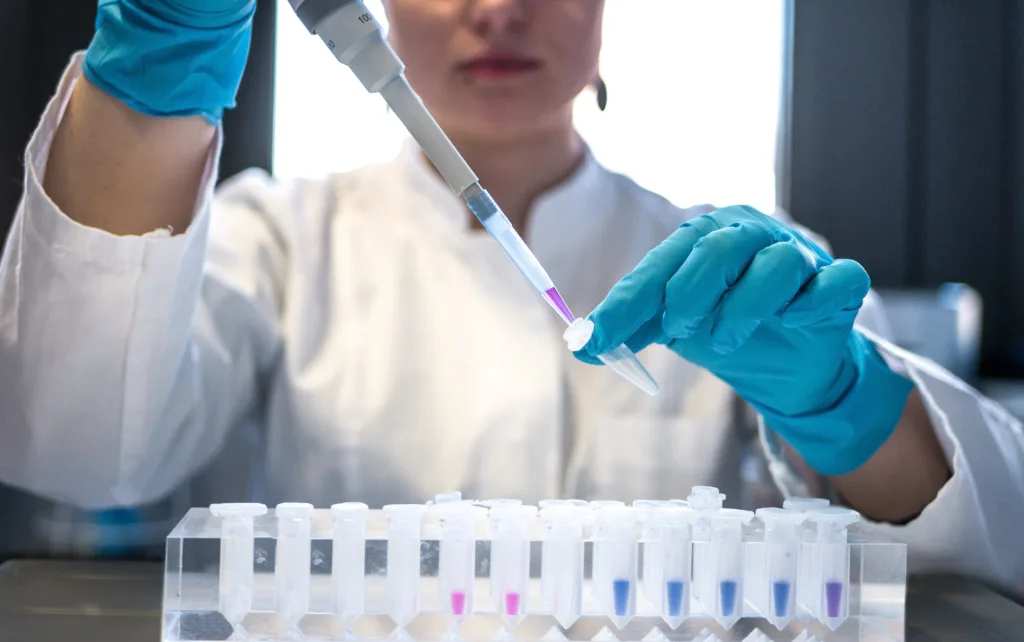A microgram, also commonly referred to as a mcg or ug, is a unit of measurement used to quantify very small amounts of weight. It is equal to one millionth of a gram or one thousandth of a milligram. Micrograms are typically utilized in the field of nutrition to measure nutrients that are required in minute quantities.
To put it into perspective, one milligram is equivalent to 1000 micrograms. This means that a microgram is 1000 times smaller than a milligram. For example, if you have a substance that weighs 1 milligram, it would be equivalent to 1000 micrograms.
Micrograms are often used to measure fat-soluble vitamins such as Vitamin A, D, and E. These vitamins are essential for various bodily functions and are required in small amounts to maintain optimal health. The use of micrograms allows for precise measurements when determining the nutritional content of food or supplements.
In the field of nutrition, micrograms are commonly used to measure nutrients like folate and vitamin B12. These nutrients play vital roles in various bodily processes, including red blood cell production and DNA synthesis. While they are necessary for our well-being, they are required in such small quantities that micrograms are the most appropriate unit of measurement.
It is worth noting that micrograms are not exclusive to nutrition and can be used to measure other substances as well. The term is derived from the Greek word “micro,” meaning small, and “gram,” which refers to a unit of weight. This combination accurately describes the minute nature of this unit of measurement.
A microgram is a unit of weight that is one millionth of a gram or one thousandth of a milligram. It is used to measure nutrients and other substances that are required in very small amounts. Micrograms are particularly significant in the field of nutrition, where they are employed to determine the nutritional content of various vitamins and minerals. Understanding the concept of micrograms is crucial for accurately assessing and monitoring our dietary intake of essential nutrients.
How Big Is A Microgram?
A microgram is an extremely small unit of measurement. It is equivalent to one millionth of a gram or one thousandth of a milligram. To put it into perspective, here are a few examples:
– A grain of sand typically weighs around 10,000 micrograms.
– A single human hair strand weighs approximately 50 micrograms.
– If you were to divide a regular aspirin tablet into a million equal parts, each piece would weigh about 0.5 micrograms.
A microgram is a minuscule unit of measurement that is used to quantify very small quantities of substances.

Which Is Stronger Mcg Or Mg?
The unit of measurement mcg stands for micrograms, whereas mg stands for milligrams. While both units measure weight, it is important to note that mg is 1,000 times greater than mcg. This means that 1 milligram is equal to 1,000 micrograms. In other words, if you have 1 mg of a substance, it would be equivalent to 1,000 mcg of the same substance.
To illustrate this difference, consider the following examples:
1. If you have a medication that is prescribed in a dosage of 50 mcg, and you need to convert it to milligrams, you would divide 50 by 1,000. This would give you 0.05 mg. So, 50 mcg is equal to 0.05 mg.
2. On the other hand, if you have a medication that is prescribed in a dosage of 20 mg, and you need to convert it to micrograms, you would multiply 20 by 1,000. This would give you 20,000 mcg. So, 20 mg is equal to 20,000 mcg.
Mg is a larger unit of measurement compared to mcg. It is important to be aware of this difference when interpreting dosages or quantities of substances that are measured in these units.
What Is A Microgram Used For?
A microgram (ug or mcg) is a unit of measurement commonly used in nutrition to quantify very small amounts of nutrients. It is equivalent to one millionth of a gram. Micrograms are particularly useful for measuring nutrients that we require in minuscule quantities. Some examples of nutrients measured in micrograms include folate and vitamin B12.
Micrograms are utilized to express the nutritional value of these nutrients accurately. Folate, also known as folic acid or vitamin B9, is essential for DNA synthesis and cell growth. It plays a crucial role in preventing certain birth defects and is especially important for pregnant women. Vitamin B12, on the other hand, is necessary for the formation of red blood cells and the proper functioning of the nervous system.
By measuring these nutrients in micrograms, it becomes easier to accurately assess their presence and adequacy in our diet. Nutritional labels on food products often provide information on the microgram content of various nutrients, allowing consumers to make informed choices about their dietary intake. This information is especially valuable for individuals who may have specific dietary requirements or who need to monitor their intake of certain nutrients.
Micrograms are used as a unit of measurement in nutrition to quantify small amounts of nutrients like folate and vitamin B12. This allows for precise assessment of nutrient content in food products and helps individuals make informed dietary choices.
Conclusion
A microgram (μg) is a unit of measurement that represents one millionth of a gram. It is commonly used in the field of nutrition to measure nutrients that are required in very small amounts by the body. Micrograms are often used to measure nutritional values of substances like folate and vitamin B12. It is important to note that micrograms are equivalent to one thousandth of a milligram (mg). Additionally, the terms “mcg” and “ug” are used interchangeably to represent micrograms. understanding the concept of micrograms is crucial in comprehending the precise measurements of certain nutrients and their significance in our diet.
